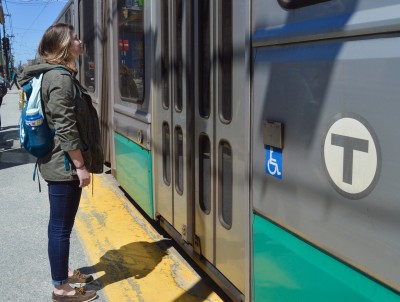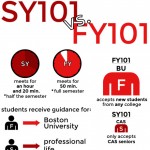
After a report found that fare evasion costs up to $42 million annually, the Massachusetts Bay Transportation Authority released plans Monday to address fare evasion by implementing improved collection strategies, according to a Monday press release.
A Keolis Commuter Services report analyzed the effects of fare evasion on the MBTA and presented the analysis to the Fiscal and Management Control Board on Monday. The report showed that fare evasion costs up to $4.5 million in Green Line services and $2.4 million in bus services.
“Improving Fare Collection and addressing Fare Evasion are both critical to providing a fair service to paying customers and increasing revenue,” the report stated.
The release stated that most fare evasion stems from rear-door boarding at surface-level stops, which increases during peak hours. Other fare evasion occurs because no proof of purchase is required after riders pass station entries, according to the release.
“To address such issues, [Automated Fare Collection] will require payment in advance with proof-of-payment onboard; all vehicles and stations beyond the gates would be paid areas; a fare enforcement team would be responsible for enforcement using random inspections system-wide; payment would be possible at all doors of buses and surface light rail; and there would be no cash payment onboard,” the release stated.
Frank DePaola, MBTA general manager, said in the release that improving fare collection will allow more revenue to improve services.
“We will also continue to add new innovative methods of ensuring fare collection,” DePaola said in the release. “We will continue to innovate to maximize the way our transit system operates for our customers in terms of service and in how it collects fares, so that we may re-invest in the system.”
The report stated that commuter rail services also suffer from fare evasion, primarily due to the open nature of the transportation system. Most stations are open to anyone, including nonpayers, adding to the risk of customers boarding trains without paying the transportation fee, according to the report.
Mac Daniel, a spokesperson for Keolis Commuter Services, discussed various forms of fare evasion.
“[Fare evasion] can take a number of different forms,” Daniel said. “Anyone who is knowingly trying to not pay their fare, people who in the past have taken pictures of the M-ticket app, they take screenshots or do a GIF of that to avoid paying, and it can even be someone who doesn’t pay the full price of their ride.”
Daniel said Keolis introduced a long-term solution by creating a “Ring of Steel” around Boston’s top three MBTA stations to ensure that every rider must pay to enter.
“We proposed to the MBTA’s Fiscal Management Control Board a proposal to step up or limit the fare evasion by creating what we’re calling a ‘Ring of Steel’ around the key stations in Boston — North, South and Back Bay Stations,” Daniel said. “We can recoup upwards of about $24 million in potential lost fare revenue through this initiative.”
Daniel said improving fare collection will help improve MBTA services in the long run.
“If we can decrease fare evasion and increase revenue, all that money goes back to the T and then they can reinvest into the system to make things run smoother,” Daniel said. “This effort, in the long term, is intended to bolster the system, making it more financially secure, and it’s also primarily an equity issue so that literally everyone is paying their fares.”
Several Boston residents shared mixed opinions about fare evasion in the city.
Dennis Lynch, 26, of Brighton, said riders are unaware of the harmful effects of fare evasion.
“People would rather not pay and feel like they can get away with it,” he said. “They also don’t see the relationship between them not paying, the MBTA losing that money and them getting the bad experience that contributes to them not wanting to pay. A solution would be to just make the experience more pleasant and enjoyable.”
Eric Sheib, 26, of Brighton, said fare evasion is a result of rider dissatisfaction.
“I feel like people skip out on the fare due to general dissatisfaction with the T service,” he said. “In bad weather, the trains back up like crazy. Plus, they stopped running them late at night … People look at the T as being terrible so they aren’t sure why they should give it money.”
Valni Robinson, 37, of Brighton, discussed the balance between high prices and quality of service.
“There are going to be millions of reasons why people evade fares,” she said. “For me, the biggest solution is you want to increase fares, fine, but make sure the services are included and a lot quicker.”















It’s common human nature. If the MBTA delivers excellent, world-class bus and rail service, keep stations clean and intact, then people would not mind paying to use the system. If the system sucks, then many people would be thinking “why on earth should I throw my money to a derelict transit system that cannot handle large crowds or provide reliable service?” If the MBTA can invest in making service better first, then raising fares, then it’s a win-win solution. We get good service, and the MBTA becomes profitable.
Yes, the T should just accept that they are running a charity and invest money they don’t have to improve the experience for people who are hitching free rides. You’ve solved it!